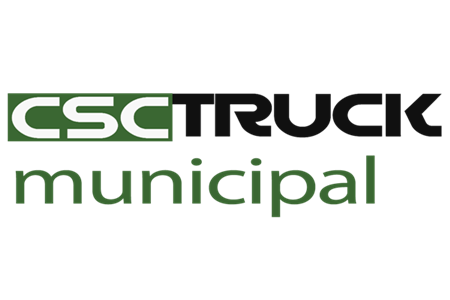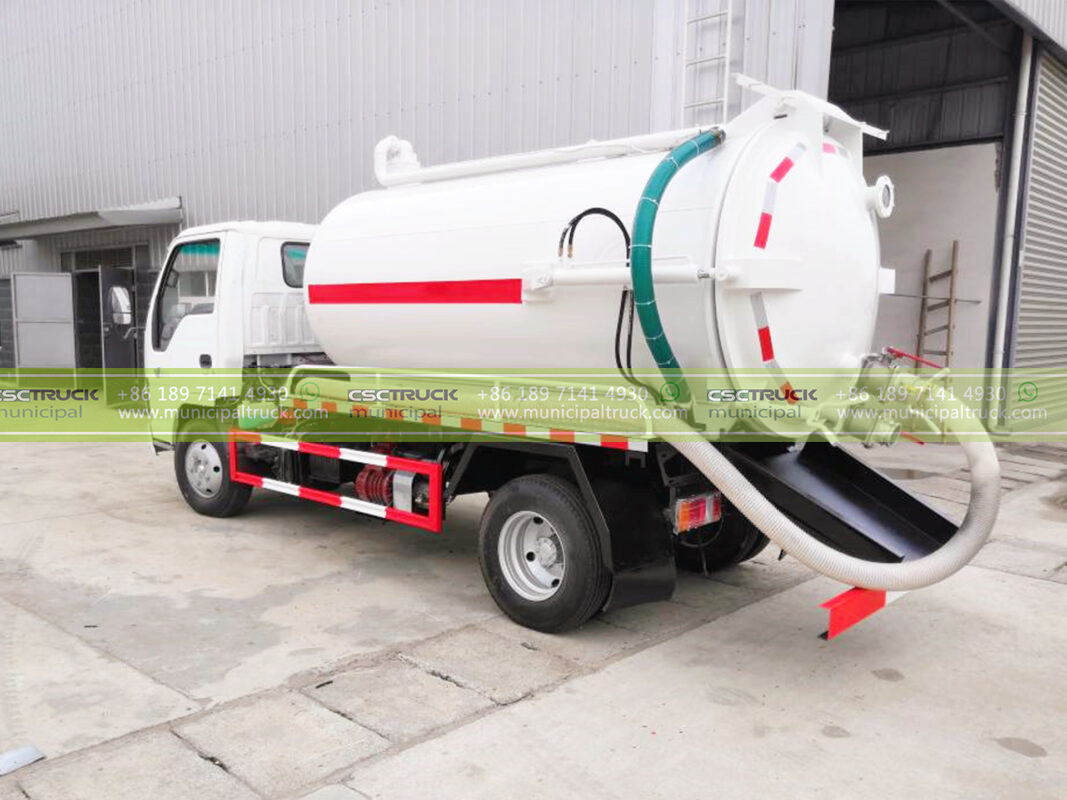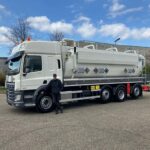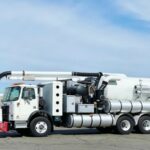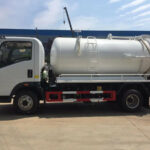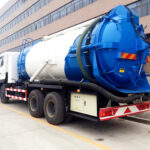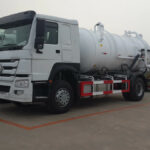Beneath the hum of urban life, a critical public health infrastructure operates with meticulous precision—specialized tanker trucks performing the complex task of transporting raw sewage from collection points to treatment facilities. Far from simple transporters, these vehicles function as mobile containment ecosystems integrating advanced engineering, real-time monitoring, and rigorous safety protocols. This intricate process prevents environmental contamination and protects communities, relying on sophisticated technologies that transform hazardous waste streams into manageable cargo.
The Biomechanics of Waste Containment
Modern sewage transport begins with engineered material science creating fail-safe containment environments impervious to biological and chemical degradation.
- Structural Tank Integrity:
High-grade austenitic stainless steel tanks (typically 316L grade with 2.5mm wall thickness) provide corrosion resistance against hydrogen sulfide and organic acids, while seamless rotational molding eliminates vulnerable welds. Internal baffle systems with hydraulic dampeners reduce liquid surge forces by 80% during transit, maintaining vehicle stability even when carrying 12,000-liter payloads through sharp turns. - Multi-Barrier Sealing Architecture:
Triple-sealed manway covers integrate primary compression gaskets (EPDM rubber), secondary liquid-tight seals, and tertiary vapor barriers—creating negative-pressure lockdown during transport. Pneumatic actuators ensure 12,000 Newton clamping force at all connection points, while embedded micro-leak detectors trigger immediate shutdown if seal integrity falls below 99.97% efficiency.
The Physics of Waste Extraction and Loading
The loading phase represents the highest contamination risk, mitigated through engineered vacuum systems and atmospheric controls.
Vacuum Generation Mechanics
- Positive-Displacement Pump Systems:
Industrial-grade vacuum pumps generate 28 inches of mercury suction through rotary vane or liquid ring mechanisms, creating pressure differentials capable of lifting solid debris up to 80mm in diameter. Multi-stage filtration traps aerosols at the intake point using cyclonic separators and HEPA after-filters, preventing pathogen release during suction operations. - Closed-Loop Transfer Protocol:
Camlock fittings with auto-sealing dry-break couplings eliminate spillage during hose connections, while sight glasses with LED backlighting enable operators to monitor waste viscosity without opening the system. Dedicated vapor return lines balance tank pressure during loading, capturing 100% of displaced gases for treatment.
Transit Security and Stability Management
During transport, dynamic monitoring systems maintain chemical and physical equilibrium within the tank environment.
- Real-Time Telemetry Integration:
IoT-enabled sensors track 15 critical parameters including methane concentration (maintained below 5% LEL), hydrogen sulfide levels (<10ppm), pH stability (6.5–8.5 range), and internal pressure differentials. Telematics transmit encrypted data streams to central dispatch every 30 seconds, enabling remote intervention if anomalies occur. - Slosh Suppression Technology:
Micro-perforated baffle designs create laminar flow compartments that reduce wave formation by 92%. Active inertia monitoring systems engage hydraulic stabilizers when lateral G-forces exceed 0.4g, automatically reducing vehicle speed through electronic engine control integration.
Operator and Community Safety Ecosystems
Protective systems create concentric safety barriers around personnel and the public during all operational phases.
- Engineered Exposure Controls:
Negative-pressure cab filtration with activated carbon and UV sterilization maintains airborne pathogen levels below OSHA Permissible Exposure Limits. Decontamination air showers purge particulate matter from operator suits before cab entry, while touchless control interfaces prevent surface cross-contamination. - Emergency Containment Countermeasures:
Secondary containment trays capture 150% of tank volume in rupture scenarios, constructed from puncture-resistant polyurethane. Automatic shutoff valves activated by inertial sensors or manual emergency stops isolate spills within 0.3 seconds. All electrical components meet Class 1, Division 2 explosion-proof standards for hazardous environments.
Precision Discharge and Post-Transport Processing
The final transfer at treatment facilities employs validated protocols ensuring complete waste recovery and vehicle sterilization.
- Targeted Unloading Methodologies:
Pneumatic transfer systems using compressed nitrogen create positive displacement without mechanical agitation, preserving sludge composition integrity. Flow meters document discharge volumes within 0.5% accuracy for regulatory compliance, while inline samplers automatically collect EPA-compliant specimens for laboratory analysis. - Automated Decontamination Cycles:
Post-discharge, steam sterilization tunnels apply 140°C pressurized vapor for 25-minute cycles, achieving 7-log reduction of microbial pathogens. Internal tank inspection cameras mounted on articulated arms verify cleanliness before certification release, with residual contamination sensors ensuring 0mg/cm² biological residue thresholds.
The continuous evolution of vacuum sewage truck technology and sewer cleaner truck systems demonstrates municipal engineering’s relentless progress toward zero-incident waste transport. Through multi-layered engineering controls and intelligent monitoring, these specialized vehicles transform public health hazards into managed material streams—silently safeguarding urban ecosystems one meticulously contained payload at a time.
